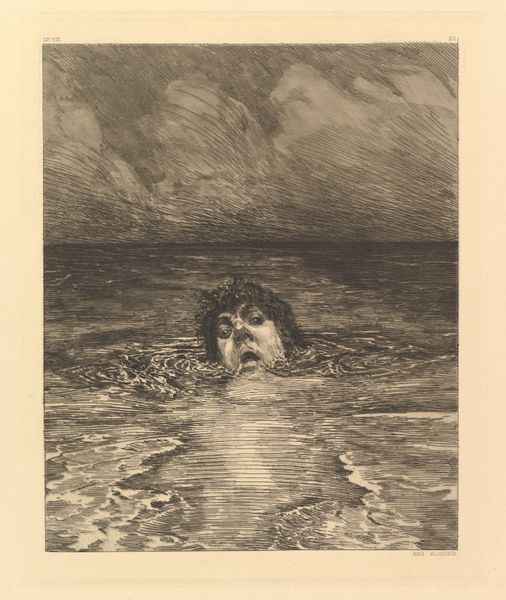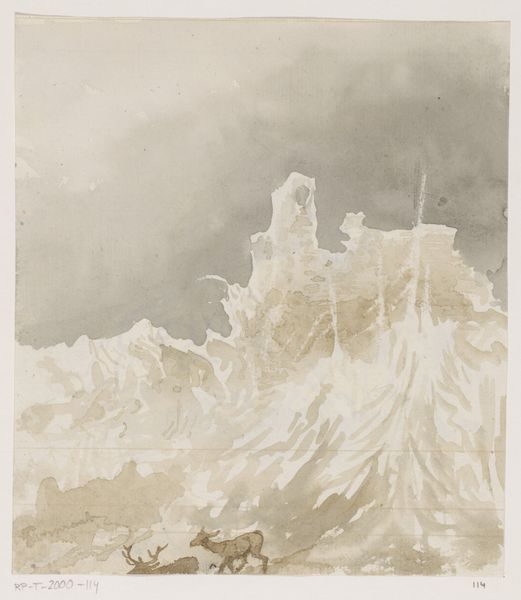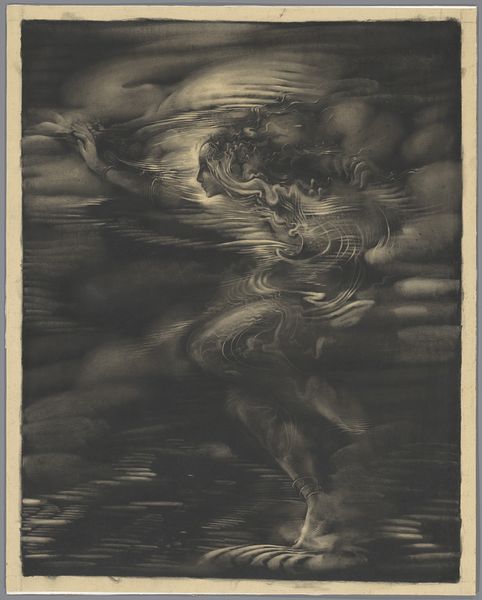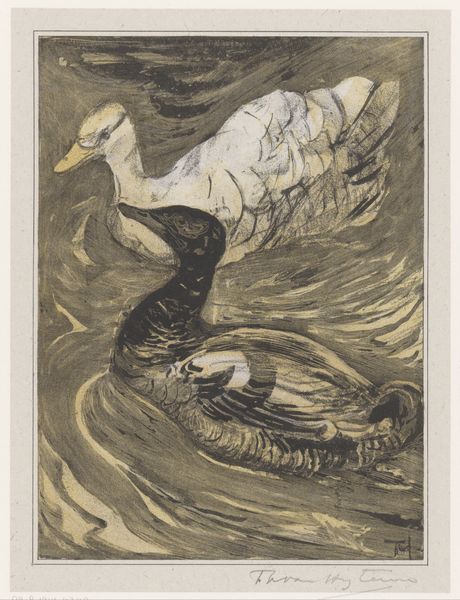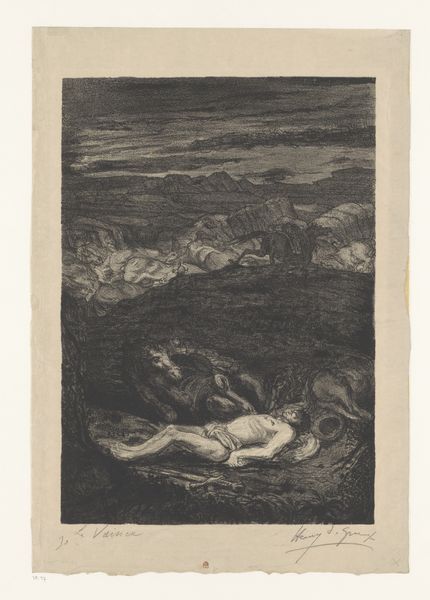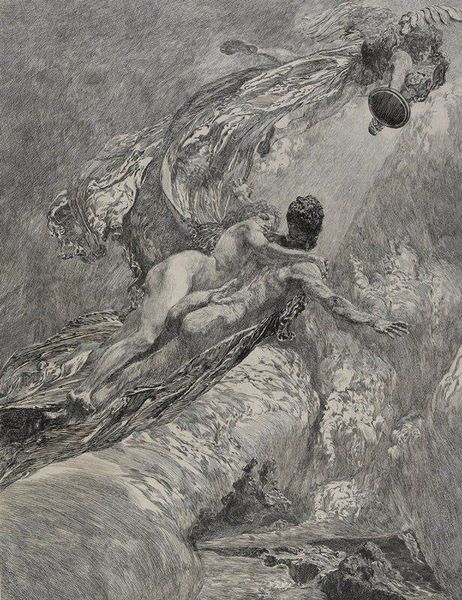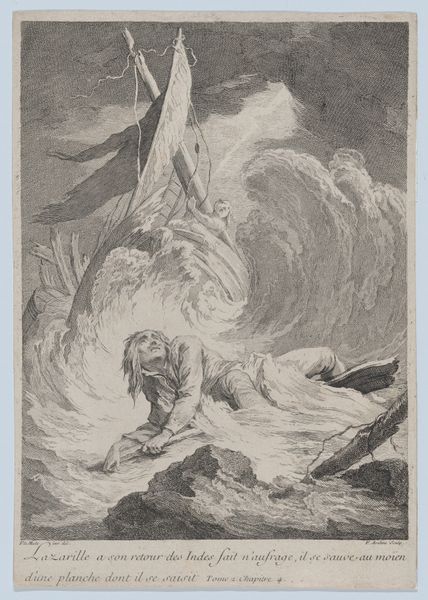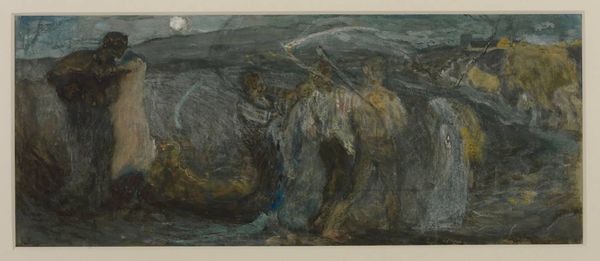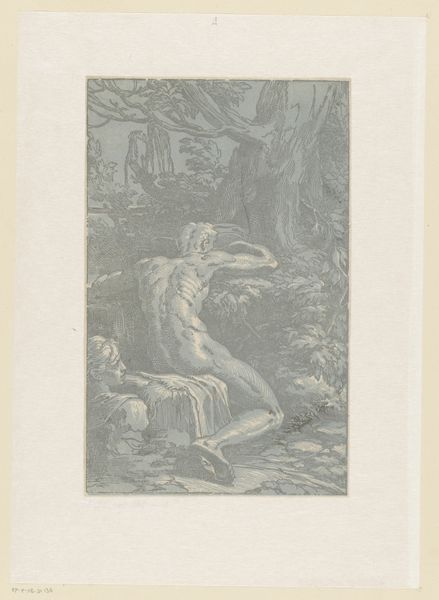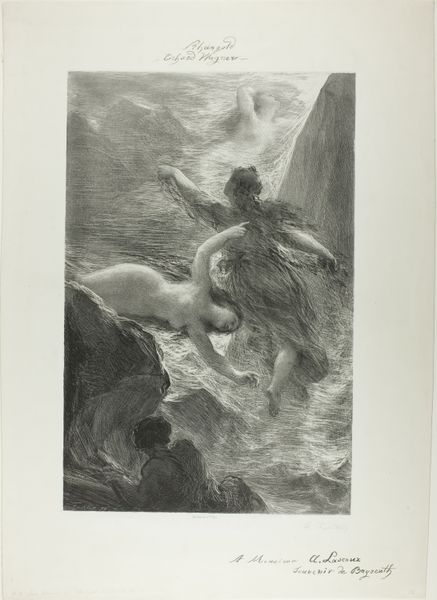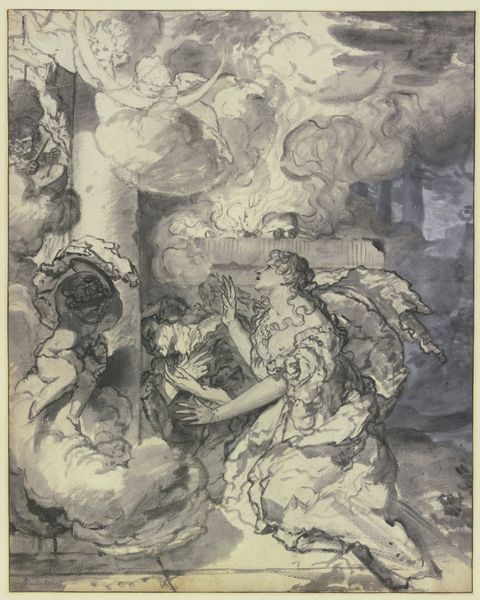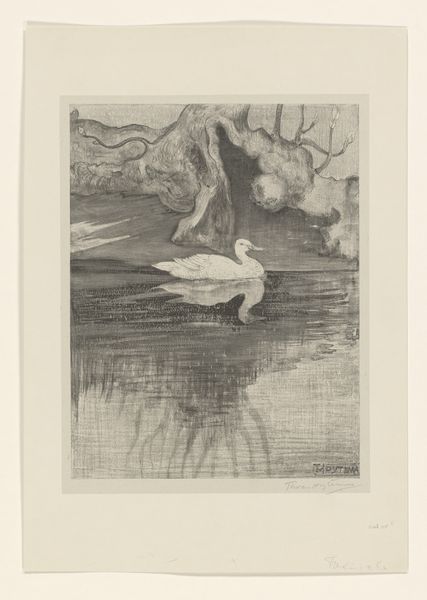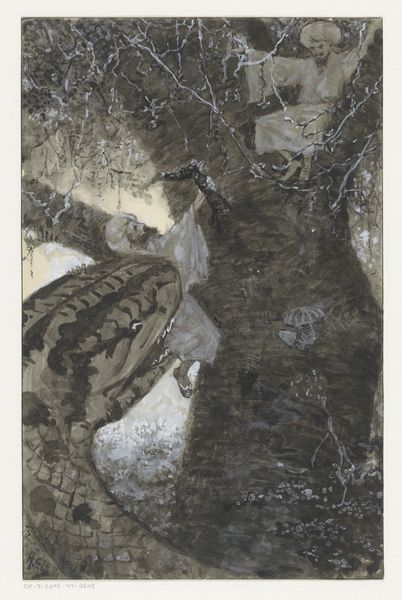
Dimensions: 237 mm (height) x 188 mm (width) (bladmaal)
Editor: This drawing by Lorenz Frølich, created between 1903 and 1906, depicts "The Little Mermaid Saving the Drowning Prince." It’s rendered in charcoal, giving it a hazy, almost dreamlike quality. The monochromatic palette emphasizes the dramatic scene, and I'm struck by the sheer physicality of the mermaid's effort. What catches your eye? Curator: What fascinates me here is how Frølich uses such raw materials, charcoal on what appears to be a textured paper, to depict this romantic scene. It really draws attention to the labor involved, doesn’t it? He’s not just illustrating a fairytale, he's also performing a material act, making something from essentially burnt wood and the rough surface it’s applied to. Consider the social context; this was a time of increasing industrialization, with debates swirling about craft versus mass production. Editor: So you see this choice of materials as a conscious statement? Curator: Absolutely. Think about the stark contrast: a mythical creature from a celebrated fairytale, rendered with these quite ordinary, almost industrial materials. It asks us to question what we value in art. Is it the narrative, or the physical manifestation of labor and material transformation? The surface quality from the charcoal itself adds to the feeling, does it not? It almost creates a murky vision of something so magically imagined by the viewer. Editor: That's a completely different angle than I considered! I was so focused on the story itself, I hadn’t really thought about the materials beyond their aesthetic contribution. Curator: And that's precisely the point. It's easy to get lost in the romance, but examining the process and materiality brings the work into a different, perhaps more grounded, conversation. Editor: I see what you mean. It changes the way I perceive the artist's intent and the work's place in a broader cultural dialogue. Curator: Indeed. And it reminds us that even the most ethereal of subjects can be rooted in tangible processes. Editor: This has been truly insightful, understanding how materials and their socio-economic context enrich the work’s interpretation.
Comments
No comments
Be the first to comment and join the conversation on the ultimate creative platform.
